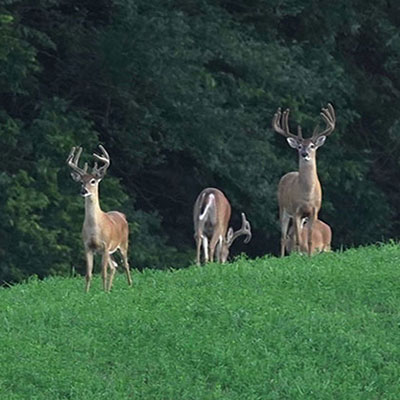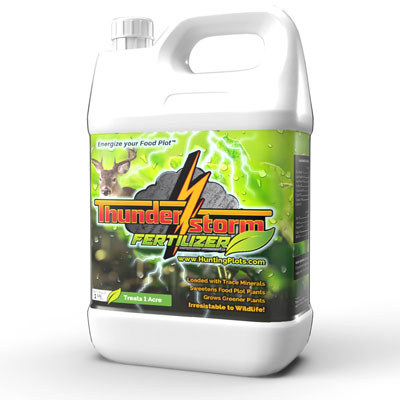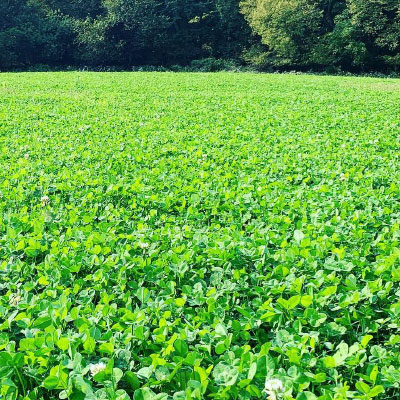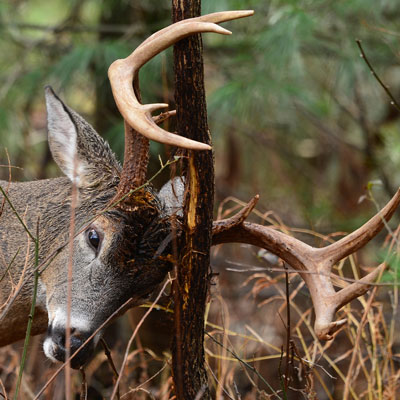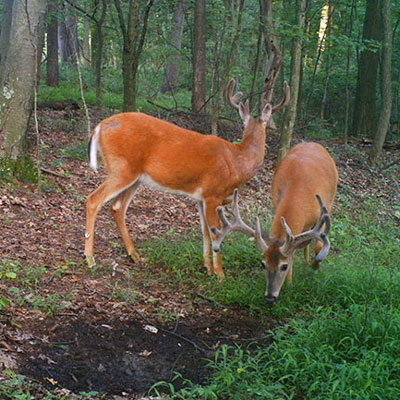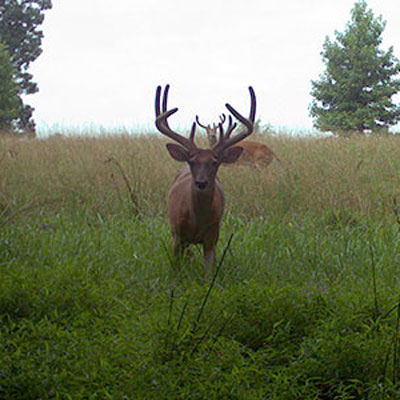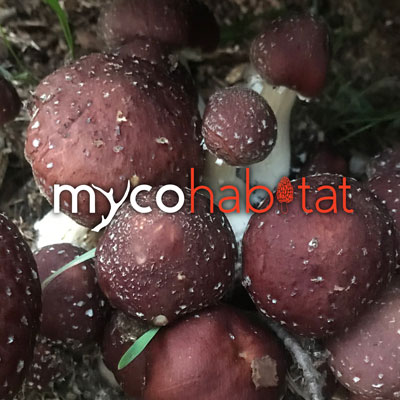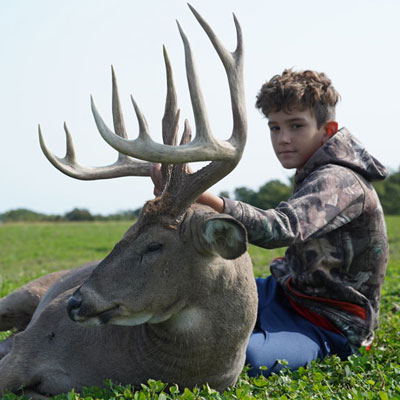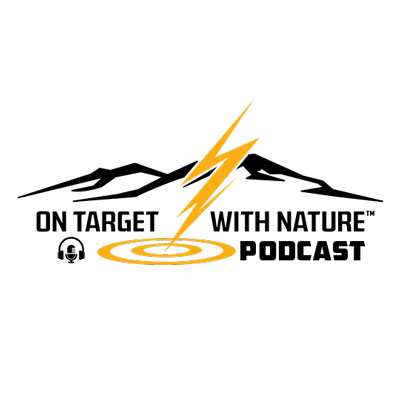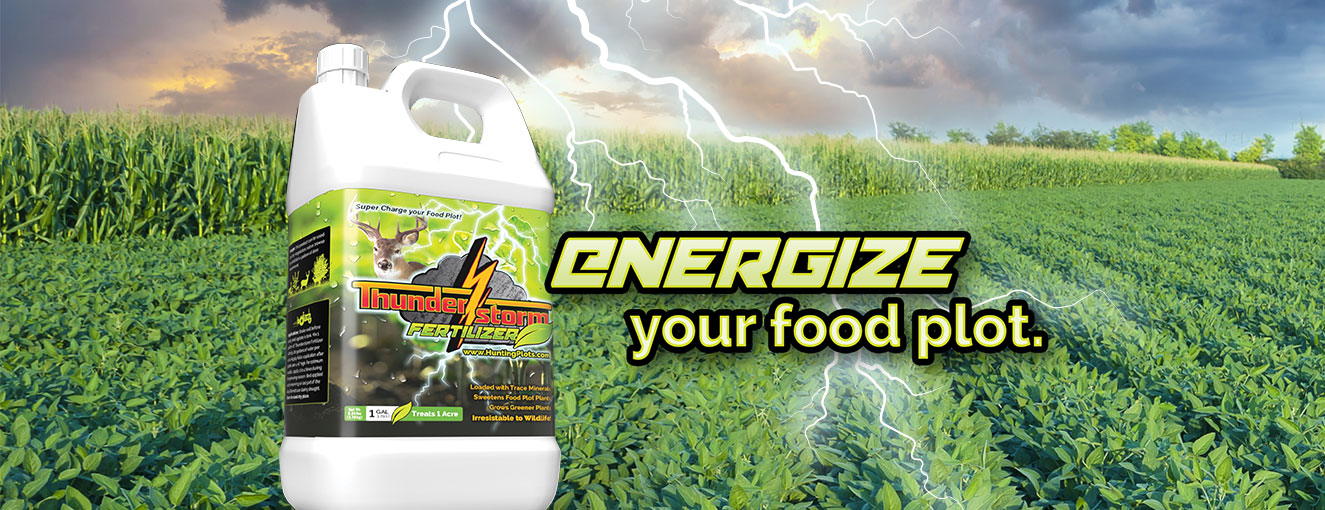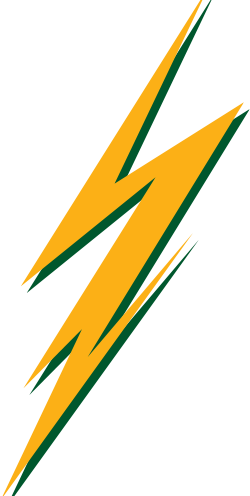
Episode 05 | 2023 | John Stoltzfus |
(More Episodes)
Trail Camera Setups
Trail camera setups. I will use this recording to help maybe new guys that are just starting using trail cameras or people that are looking to utilize their trail cameras and be more efficient with them. I would say, as far as trails camera setups, there's a couple things that I look for - and I might break it down in different phases of the year - but let's just look at a trail camera setup first of all.
I always like to face my trail camera towards the north and try to avoid east or west or even south, especially in the wintertime because of sun blair, you're gonna get a lot of pictures set off because of the sun on it. And then I want that trail camera - the center of that trail camera - about even with the top of a deer's back. So I want that about waist high, and make sure that if you're on a hill, that you're facing it down and you are parallel with that line of the terrain. So still wanna go about three foot off the ground, but you might have to angle your trail camera or put a stick behind it or something to get that three foot off the ground.
Out - typically I like to set up my trail cameras about 40 (feet) - it depends on what you have, but I'm gonna say about 20 to 30 feet from what I am trying to get pictures of. Now, I know they reach out - some of 'em will reach out to a hundred feet at max - but about 30 feet is something where that's comfortable, it's not right in their face, but you'll still get good pictures; 20 to 30 feet is about the range that I'd like. In certain situations, I will put 'em closer depending on what's in the backdrop and all that.
So think about that as well. For your picture quality, if you have a dark background, so let's say you have a thick wall brush behind it, and you can face that camera towards that, you're gonna get a better backdrop on your picture. If you have something as a back wall there, and that can be helpful as well.
But let's break down a little bit of different phases and where I want my trail cameras to be. Let's start in the fall, and then we'll go back into the spring. We're in the fall right now. Most of my trail cameras will be set on mock scrapes at this time of the year to keep an inventory on what bucks are around and hitting my scrapes, and also travel corridors or trails and pinch points, and maybe closer to bedding areas - coming outta bedding areas, travel corridors, that narrow down and break in spots where you can funnel 'em.
The other spots would be food plots. I still wanna monitor my food plots here, even during the rut, because they'll be out there in the evening, and if you have that intel of bucks spending time out in the evening, you can then think about patterning them where they will be exiting in the morning, going back into their food plots. So I think it's very helpful to also keep tabs of where they're spending their evening hours.
We had a very interesting picture of a buck bedded down in the morning, 25 yards from our one stand - it's kind of a staging area - so you can imagine how hard it would've been to get into that stand in the morning with him coming off the field and bedding there, just in off the field edge, close to that stand. It would've been nearly impossible to get up into that stand without spooking that buck - and it was one of our target bucks!
So, that is the kind of stuff that cameras give you information on. How to hunt them and to learn more about how they move and how deer thinks and why they put themselves in certain positions at certain times. So it's a very helpful tool to get more information on the white tails and when the right activity starts in your area. Oftentimes, if you see a hot doe come in at a certain time, she's gonna come in at that time again next year. So when you see peak movement in your area as being a certain week or a certain timeframe, oftentimes that repeats itself year after year to a certain point within a couple days. So that's helpful information that you can get looking back over your trail camera.
The other thing is moon phases. A lot of the trail cameras have moon phases on the trail camera that can show you when the moon phase is (such) that you're seeing more daylight activity. That could be helpful in your planning of when you wanna hunt; when you see that peak movement according to the moon phase. And then of course weather. A lot of those trail cameras will also show what the weather was. Some of them even will show the barometric pressure, what that was.
So there's all kinds of different trail cameras. You can probably get 'em for $60 if you get a cheap one, or on up to $300 / $400 if you get a cellular one. But there's also cellular cameras now available for around $120 - $130 for a good cellular camera. So that can be a benefit if you're closer to bedding areas and you have the capability to have it emailed or to a phone. But if not, putting those cameras somewhere where you don't have a lot of invasion into their bedding areas and things like that is another good thing to think about. How you're accessing, getting in and out of the trail cameras or changing the trail camera cards and trying to be as scent free as you can. I like using the Discovery soap when I'm changing cards so I'm not leaving much human scent at all when I do change those cards out.
So those are things to think about. Set up facing it to the north is my best approach that I usually do, and that will help you get better pictures and not have it set off. And then make sure that there's no branches right in front of it. Clear a nice path in front of it so you don't have movement that could also set it off. Cause it's nothing more frustrating than going through a bunch of pictures of nothing - or no deer or no turkey.
So the last part of it is turkey. So some people hunt turkey in the fall, and food plots can be another great place so you can monitor and see how the turkey are responding to it. And then in the spring I like using strut zones, high points of the fields, small openings in the woods which are on high points - they love those areas for strut zones - and then also tops of ravines. You'll see them as far as flying down and using those areas to roost - to fly down off of a bench or into a ravine, and then they'll fly down back there and work their way up over that ravine - and can be great places to catch turkey and see what pattern or where they're spending a lot of their time.
So I'm hopeful that this is helpful information. I will probably try to update this and add to this library as I'm able. So again, hope you take time, get out, experience nature and it's many blessings.
More Episodes











